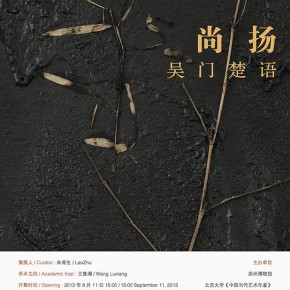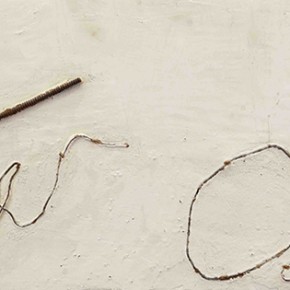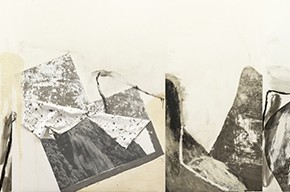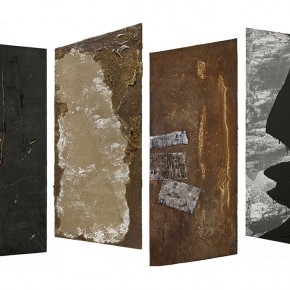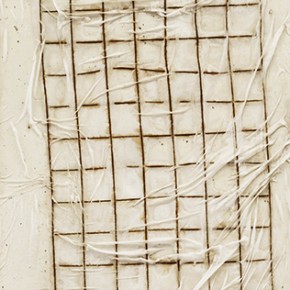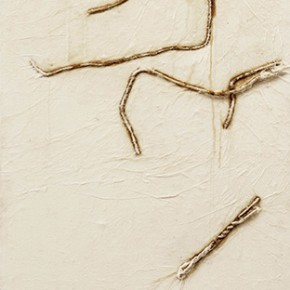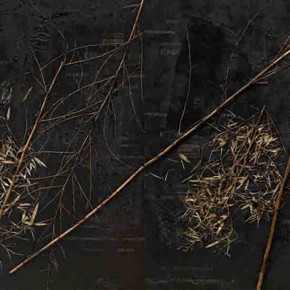
The Shang Yang solo exhibition Shang Yang’s Art in Suzhou will open at the Suzhou Museum on September 11, 2013. This +exhibition is curated by professor LaoZhu, along with academic host Wang Luxiang, hosted bythe Suzhou Museum, the Peking University China Contemporary Art Yearbook and Beijing Century Wall Culture&Arts LTD, and organized by Art Time Magazine. This exhibition will present Shang Yang’s recent artistic explorations, which are a marked departure from his style of the past.
The Chinese title for this exhibition is Wumen Chuyu. It consists of two key terms, “Wumen” and “Chuyu.” The term Wumen has three layers of meaning. First, it represents ancient Suzhou, the ancient state of Wu. Second, it represents modern Suzhou, that model of Chinese modernization. Third, it represents the extreme conflict between the classical and modern. Likewise, Chuyu has three layers of meaning. First, it represents the ancient state of Chu, which was situated in the artist’s hometown of Wuhan, Hubei Province. Second, it raises the question of how to deal with the discrepancies between two cultures when the states of Wu and Chu collide. Third, it asks how to present a contemporary experimental character within this collision.
Though Shang Yang already stands at great heights, and is over seventy years old, he has used the occasion of this exhibition to once again engage in contemporary art experimentation, setting aside his achievements with the Dong Qichang Project and shifting to another direction of further exploration and breakthroughs. The works of the Dong Qichang Project have been accepted by the academic world, accepted by the art market, and collected by museums. For many artists, this is the end of the journey, but for Shang Yang, it marks a new beginning. That is because one work from the Dong Qichang Project, a massive artwork stretching 11 meters in length, was required to be collected by a famous private art museum, but he destroyed it to create the first artwork for the exhibition Shang Yang’s Art in Suzhou. The fact that he would destroy and rebuild this “successful” and “representative” artwork, so that this artwork will never again exist in the world, shows us Shang Yang’s immense potential. This is moral bravery and spiritual power only found in a select few artists of enormous talent. This important shift in Shang Yang’s art has made him a phenomenon in Chinese contemporary art, and in art as a whole, as he has surpassed Western art’s understanding of the essence of material and spirit, and turned freedom and growth into the very fabric of art. Here, painting is no longer an illusion of three dimensional space or a planar layout or design. Instead, it has followed the artist’s creative process, constantly producing traces and spiritual records from the void, so that each work of art is a living composition in the truest sense. In this process, the artist has continually pushed his artistic practice to higher levels of refinement. In this sense, Shang Yang has a dual identity, as both a successful contemporary artist “of the past” and a contemporary artist currently engaging in artistic experimentation. This exhibition at the Suzhou Museum will present the artist’s latest achievements.
About the exhibition
Shang Yang ’s Art in SuzhouCurator: LaoZhu
Academic Host: Wang Luxiang
Exhibition Opening: 3:00pm September 11, 2013
Duration: September 11—October 24, 2013
Location: Suzhou Museum
Host Organizations: Suzhou Museum
Peking University China Contemporary Art Yearbook
Beijing Century Wall Culture & Arts LTD.
Organizer: Art Time Magazine
Media Enquiries: Zhang Hui, Art Time Magazine
Tel: (86) 150 1028 9210
QQ: 723450054
Email: zhanghui@wallart.cn
Courtesy of Shang Yang and Suzhou Museum.


